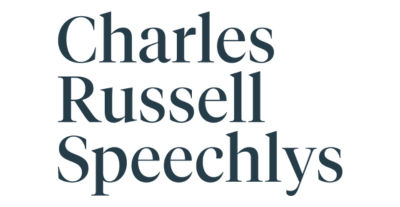Knowledge Hub
Join the Conversation!
Impartial and independent, ThoughtLeaders4 Private Client Knowledge Hub hosts cutting edge industry content and insight.
Email maddi@thoughtleaders4.com to submit content.
Splitting Finances on Divorce
Date: 12/05/2020 Type: Articles Topic: HNW Divorce | Finances |Getting divorced is never easy and quite often, splitting up the finances is one of the most stressful parts of the divorce process. As financial advisers, we cannot take the emotional stress away but we can make the financial discussion easier and in some cases, we can find ways to improve the overall tax situation. I have even seen one situation in which a divorce became the most viable option to achieve a specific financial goal… more on this later.
Cash Flow Planning
But first things first… Our starting point is always a cash flow projection, which takes into account the couple’s existing assets and liabilities, their income and expenditure. We can then run different scenarios on how assets might be split[1] and what the most tax efficient way of splitting the assets are. For this, we consider the different wrappers clients’ assets sit in. This could be pensions, Individual Savings Accounts (ISAs), insurance bonds, main taxable accounts, company structures and we also consider property of course. Each asset and wrapper has a different tax profile and various taxes apply to different types of assets, e.g. capital gains tax, income tax and pensions Lifetime Allowance[2] tax. In other words, it can make a significant difference if one of the divorce parties receives a taxable main account instead of a pension for example. It is important to note that some reliefs and tax opportunities are lost at certain points throughout the divorce process and it is therefore vital to start talking to your financial adviser as early as possible.
Liquidity is also a consideration, in particular when it comes to property assets but there are other illiquid private company investments that could fall into this category. Finally, I would consider the ability to generate income from the assets, how reliable the income stream is and how it would be taxed.
Cash flow planning can provide greater clarity and whilst it doesn’t answer the questions on how assets should be split from a legal standpoint it can serve as an objective tool to show what is more efficient from a financial point of view.
“Don’t be a Crazy Fool” - Mr & Mrs T Case Study Example
Let me provide you with an example. Mr and Mrs T were both our clients. They had decided to split up and they wanted to go through a divorce that would be as amicable as possible. They had agreed to a 50/50 asset split and asked us to provide them with financial advice on how best to split their assets. Mrs T was attached to their main home and a buy-to-let property that they held whereas Mr T had a very significant defined benefit pension. They had other assets which could relatively easily be split but the main difficulty lied with the pension and the properties. One option was for Mr T to retain his pension and for Mrs T to keep the properties. Purely looking at values, this would have worked. However, the pension was so sizeable that it breached Mr T’s Lifetime Allowance2, which meant that his pension would be reduced significantly to pay for the Lifetime Allowance tax charge. In addition, whilst providing a valuable guaranteed income for life that rises in line with inflation, the Defined Benefit pension was relatively inflexible and the entire pension was subject to income tax. The properties on the other hand provided more flexibility to Mrs T as she could decide to sell one of them and release capital and / or rent out the buy-to-let property and thereby generate a taxable income. The other – more tax-efficient – option was that Mr T would split his pension (through a pension sharing order) and they would either split the properties or Mrs T would transfer some of her cash or other liquid investments to Mr T. This enabled them to use both their Lifetime Allowances and pay a significantly smaller amount of Lifetime Allowance tax charges. As a consequence, they were both better off with this option.
If Divorce is the Answer, What is the Question?
Finally, I wanted to finish off with a more light-hearted example where a divorce actually became the potential solution. One of our clients was concerned about the financial security of his defined benefit pension but could not transfer out of the pension at that time as the scheme trustees would not allow it. The only option to receive a transfer out quote was in case of a divorce. Our client very seriously considered this option given the size of their pension entitlement, but I am pleased to say that they decided not to proceed as the couple did not want finances to overtake their emotional bond.
If you would like to speak to a member of the team, please contact:
Wealth Planning: Svenja.Keller@killik.com 0207 337 0631
Family Office: FamilyOffice@killik.com 0207 337 0664
[1] Please note we do not provide legal advice on the split of assets – we run through different options, based on what the couple or their solicitors are telling us and work out the financially most efficient way to split assets.
[2] The pensions Lifetime Allowance is the maximum amount an individual can accumulate within their pension before triggering additional tax charges. In the 2019/20 tax year, this limit is £1.055m. It will rise to £1.073m in 2020/21.
Author
Svenja Keller – Killik
Our Private Client Corporate Partners































